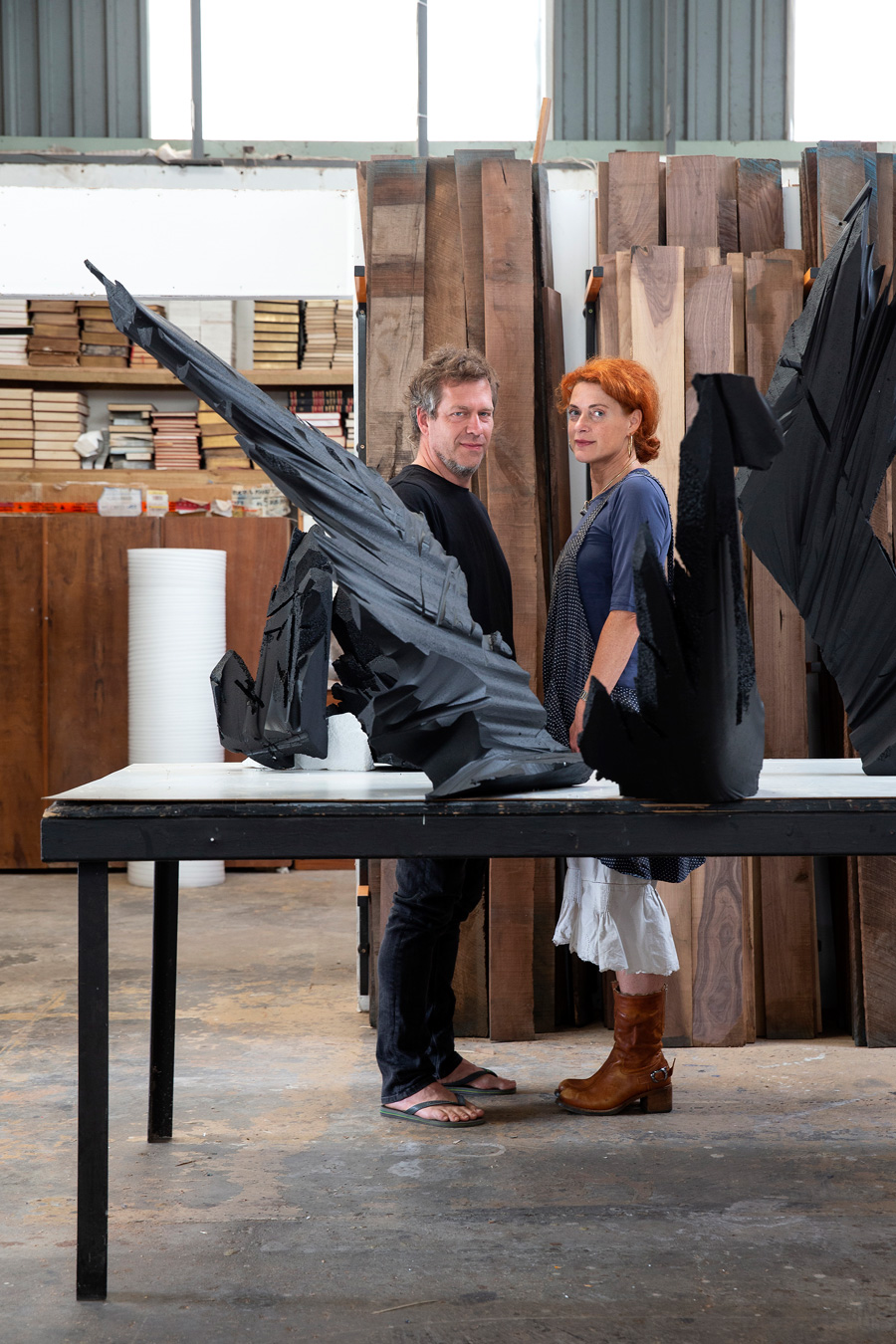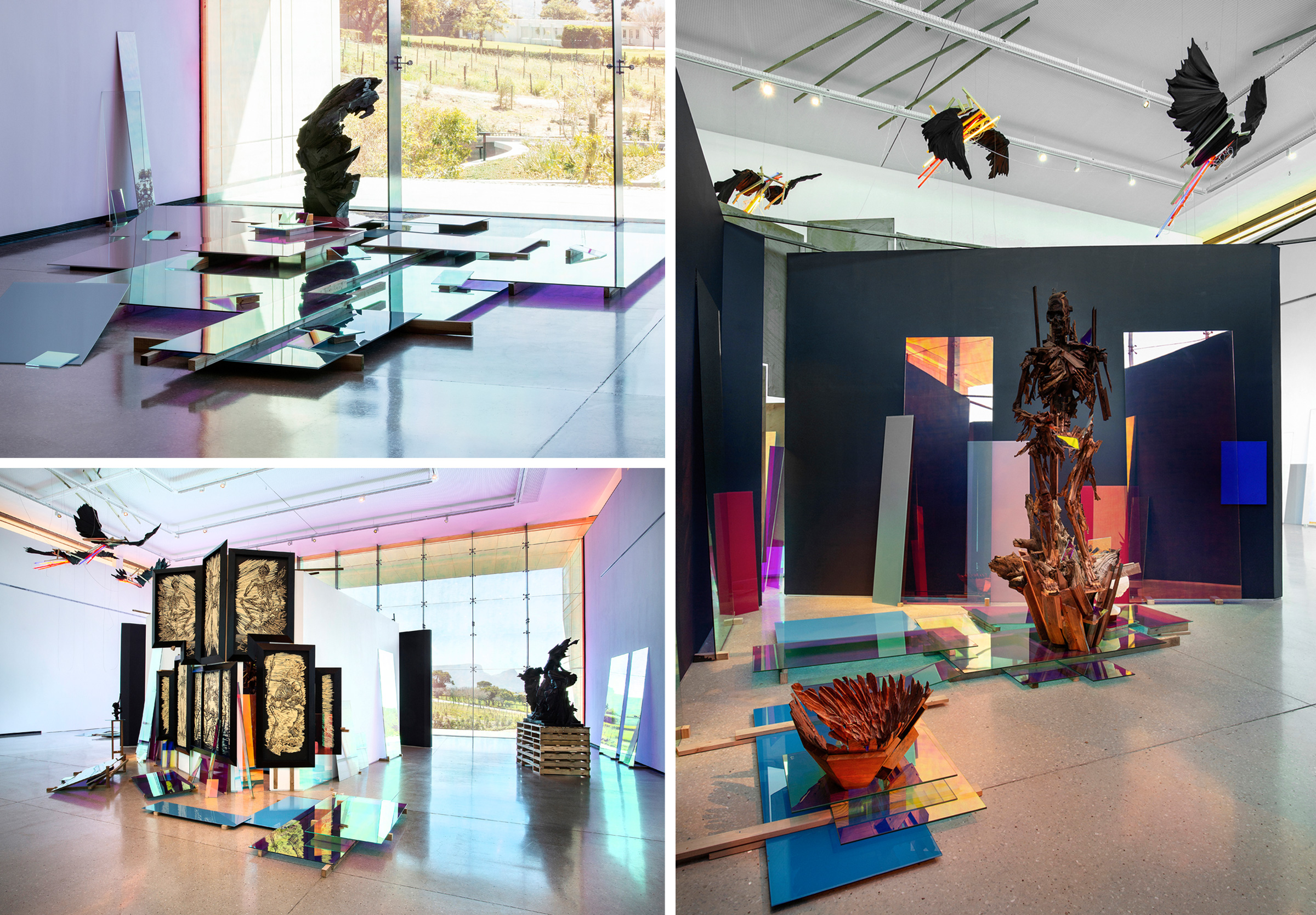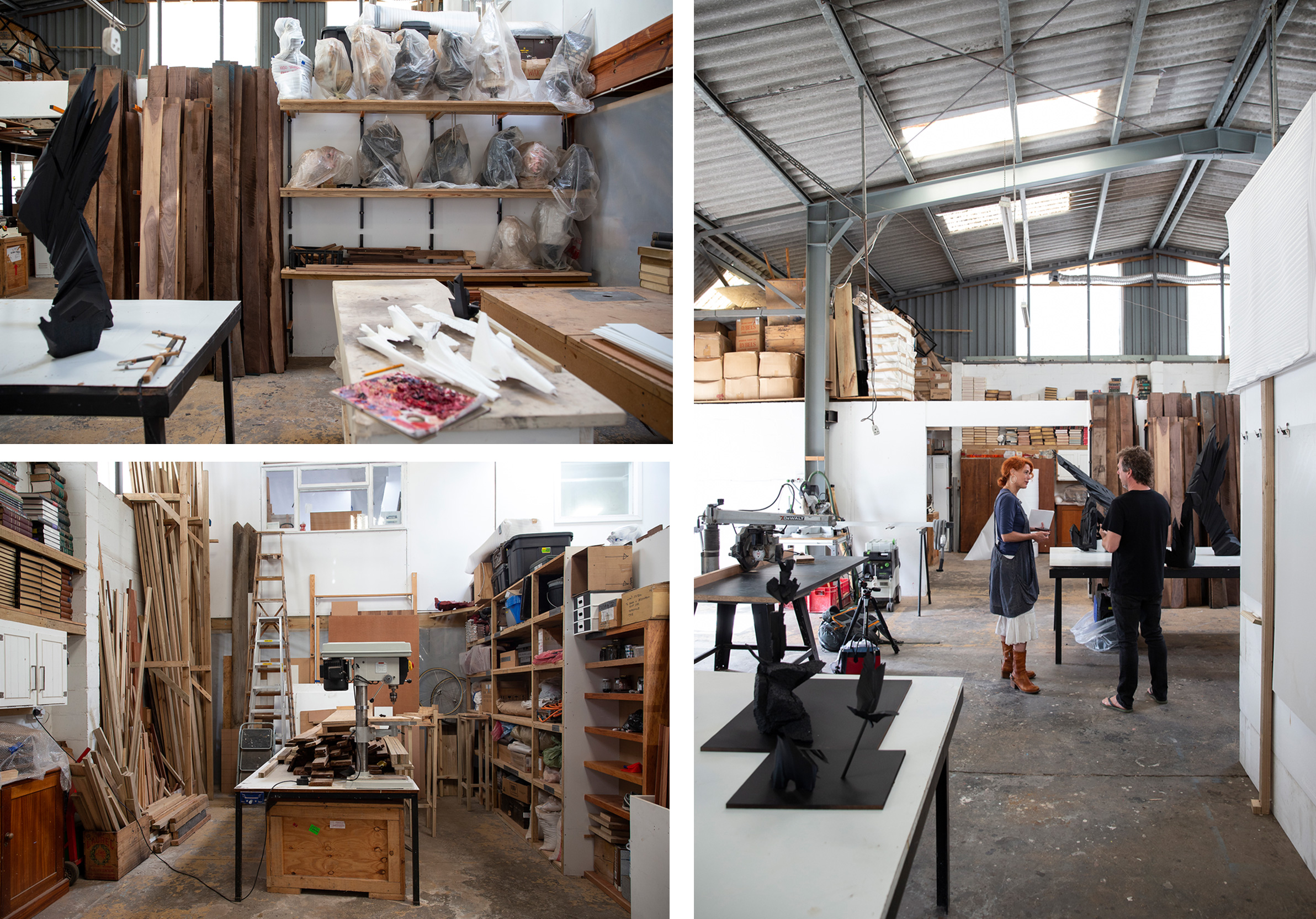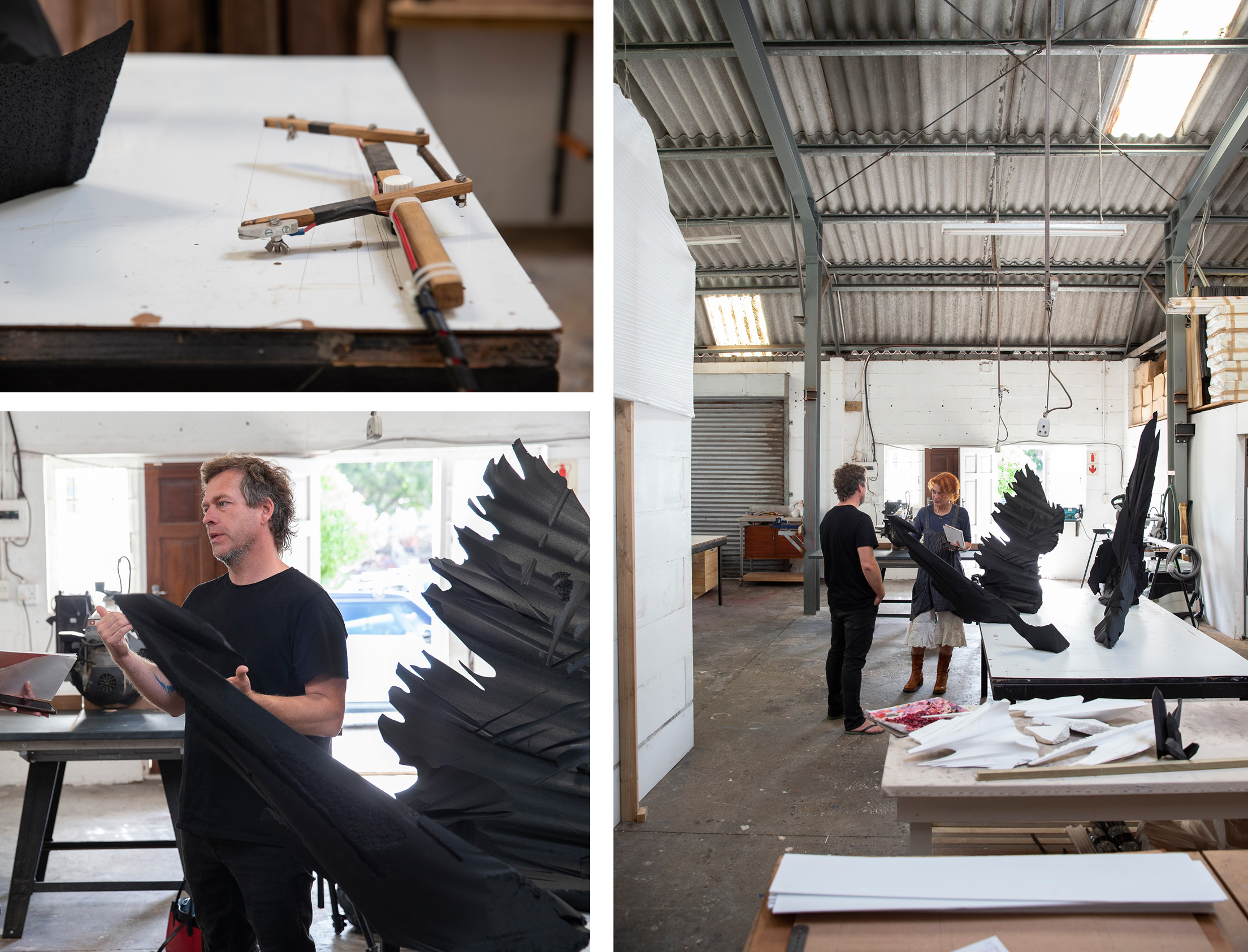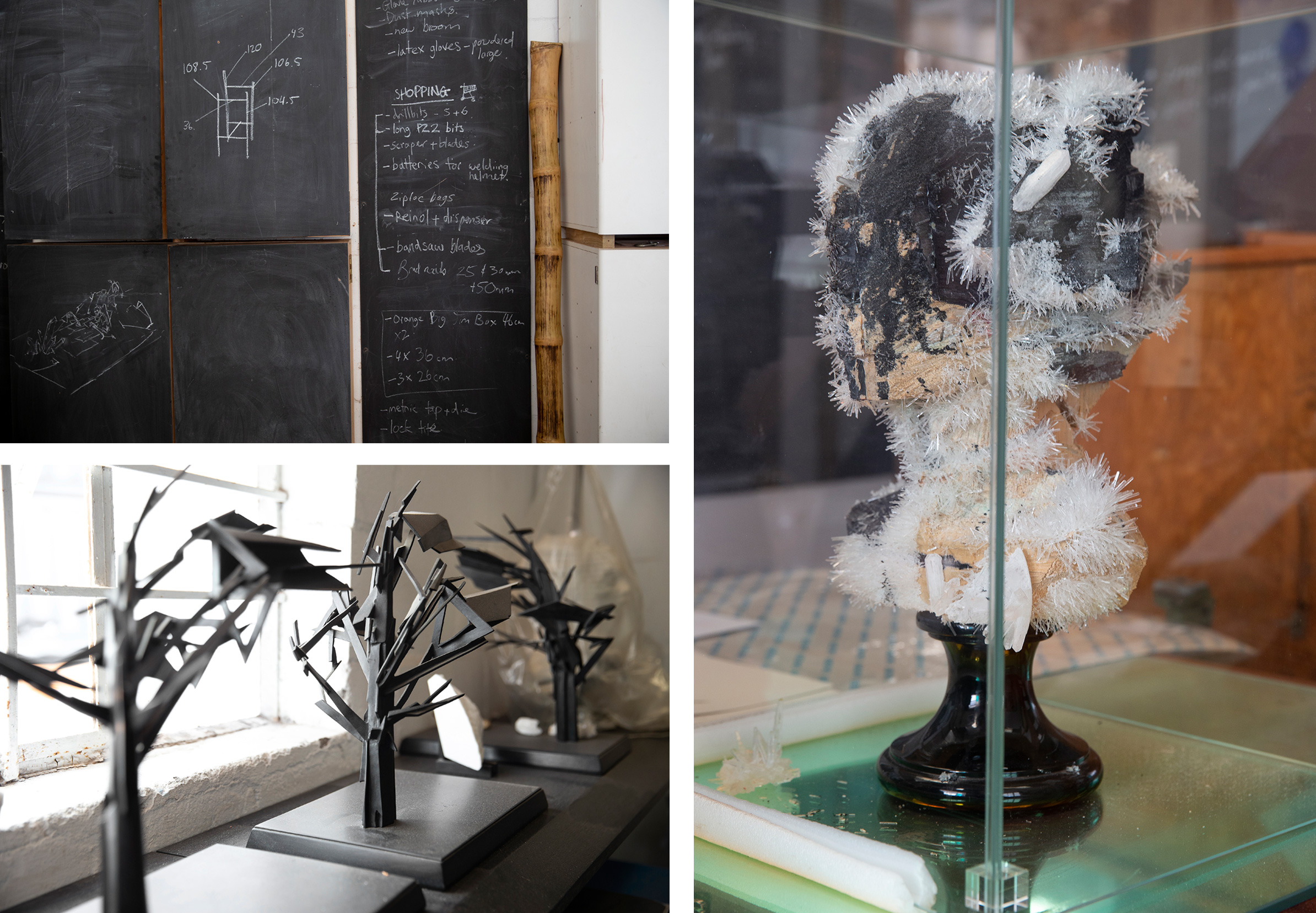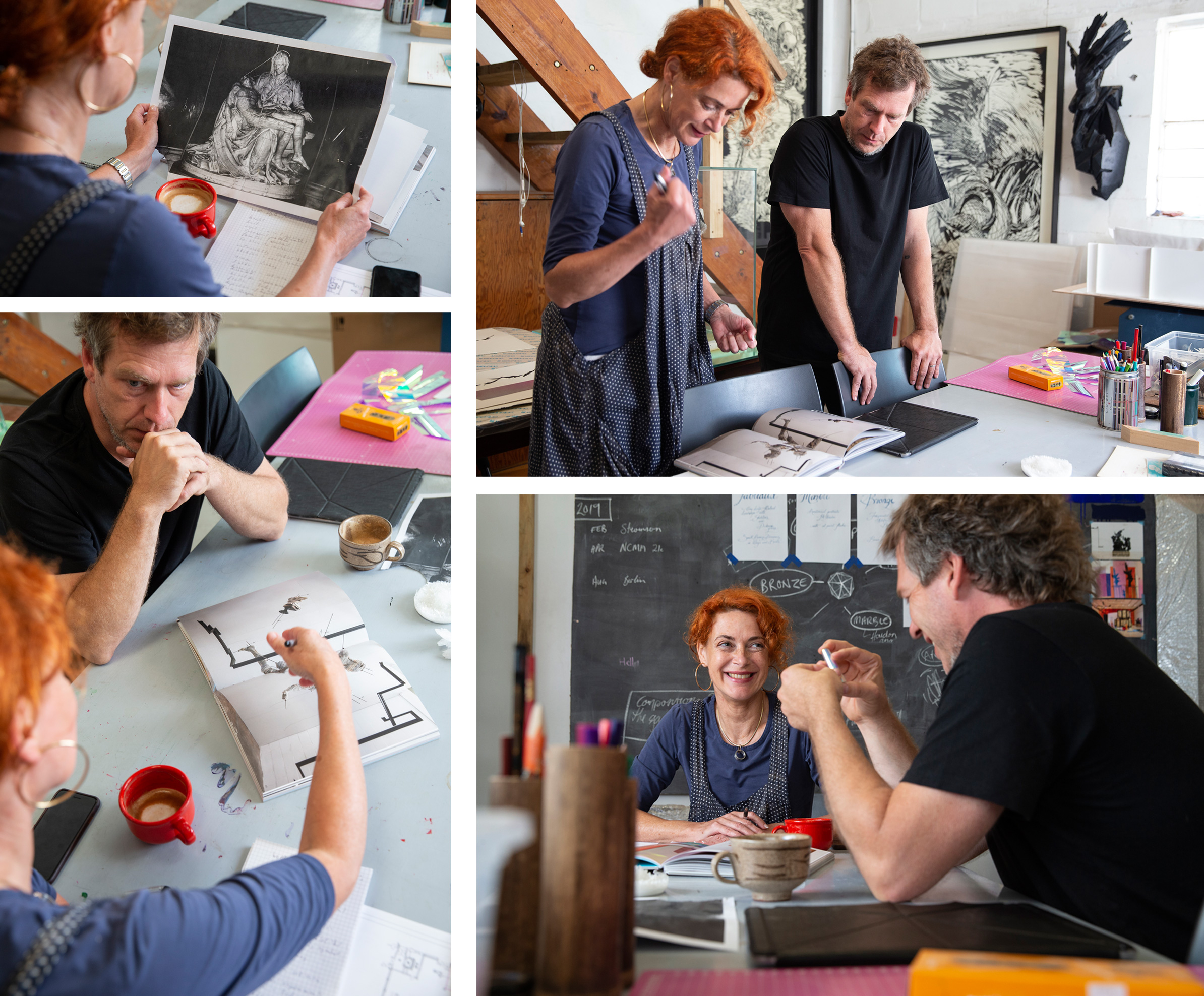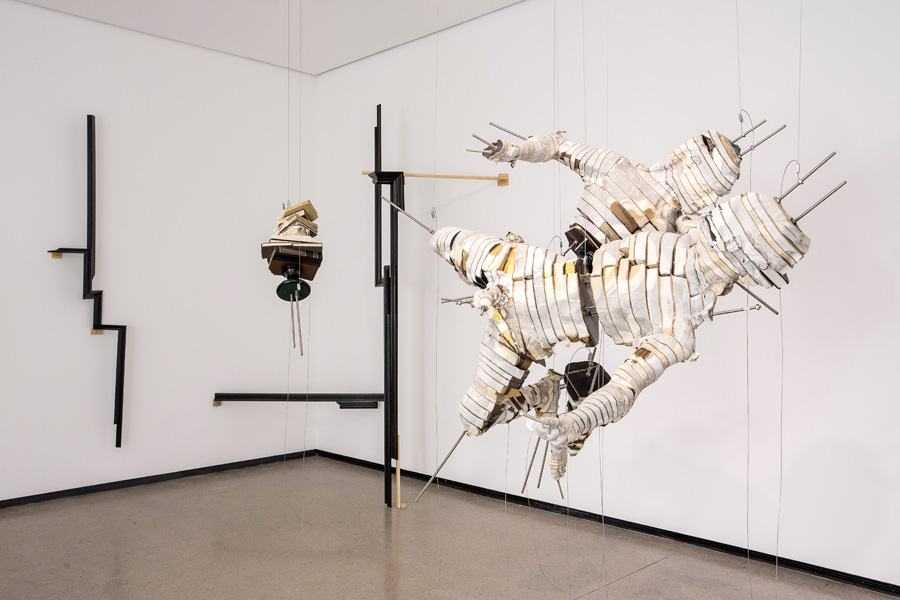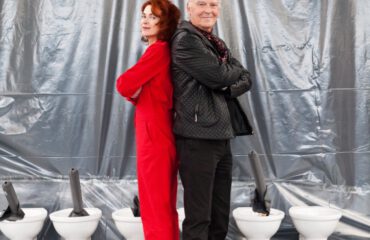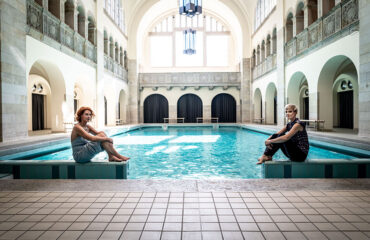Photos: Karl Rogers
Cape Town. The Heliostat exhibition at the Norval Foundation had impressed me so much that I wanted to meet the artist personally. Here, Wim Botha’s work, which regularly attracts attention also at international exhibitions, was showcased in a huge solo show.
Heliostat, Exhibition, Norval Foundation (2019)
I am very excited when I drive to Kommetjie to visit the artist in his studio.
Kommetjie is directly on the Atlantic coast, to the southwest of the cosmopolitan city of Cape Town. The studio is situated in an unremarkable warehouse in the middle of a small assortment of various manufacturing businesses. In keen anticipation I enter the sacred halls, where we are welcomed by Wim Botha.
If it were not for the odd pieces of art so typical of him, I could have thought that I find myself in a well-assorted joinery rather than in an art studio. At a second glance, however, tangible evidence of his works is recognizable. Here, you find a well-ordered pile of books which, so I presume, will one day determine the structure of a sculpture and there, a collection of wooden boards – the material which he uses for pieces of furniture as well as installations. And last but not least polystyrene boards, which simulate natural stone or bronze in his sculptures and are also moulded into the basic form for bronze casts.
Which is exactly how it was done in the black polystyrene objects positioned on his work bench at which I now have a closer look. While doing this, something strange happens. Looking at them individually, their sharp edges and expressiveness remind me of fractions of a mountain range or relics of constructivism. However, as a group they emerge into something that makes me think of the burned wings of angels of a Renaissance sculpture.
Before we turn to content-related questions, I take this opportunity to find out something about the technical process.
„How do you achieve these incredibly clean edges”, is my first question opening the conversation. „With a simple tool which I built in two different sizes for this purpose. It makes use of a resistance wire which heats up when current is passed through it. Basically a simple process, but you must watch the temperature like mad. Otherwise, the whole work can be ruined in a minute”, he replies, laughing. Surprised, I clarify, “You make your own tools?” “Yes, sometimes. Sometimes it is enough, though, to slightly modify machine tools for my purposes.”
The whole interior of the studio looks very individualistic and is probably homemade, as I just notice.
We move into the adjoining office. While Wim Botha prepares some coffee I have a look around. On the window sill and the shelves I see miniature models of the sculptures, some of which I have seen in his exhibition. I think I recognise drawings of his Altarpieces on the walls, which, from an image motif and lines point of view, remind me of baroque art. Opposite them hangs a large board which is covered in writing and sketches and obviously serves as a mind map.
Eventually, I am completely mesmerised by a bust protected by a glass cover. Made from wood, partly left in its natural state and partly blackened, its delicate white crystals in particular gives it a mysterious and very fragile appearance. “Unfortunately, it does not only look fragile”, Wim Botha now reveals. “When I created it I did not take into consideration that the wood expands, but the salt crystals do not. Which means, it cannot be transported”, he adds with a slight note of a despair in his voice.
„Perhaps an example for the fact that your ideas develop during the creative process?” We sit down at the table.
Botha: „Yes. Correct. This would not have happened with the method I used in the past, when I approached the execution of the work with a concrete idea. But at some stage, that simply was not enough for me. Everything was too predictable. It was precisely the unexpected transformation that became increasingly important to me, those processes that developed during the creation of the work.”
“Should we perhaps, as an example, compare the mielipap replica of your Pietà, created in 2004, with your Dead Pietà from 2015? The former was a true to scale mirror image, the latter an abstracted, extremely expressive reinterpretation. The two sculptures also show that you enjoy working with the Christian icons of history of art or – as with the Altarpieces here – with the skeleton as the classic vanitas symbol. Why?”
left: Joburg Altarpiece (2009), b.r.: Mieliepap Pietà (2004), t.r.: Dead Pietà (2015)
Botha: “Basically, I like to play around with associations or with what we think we know. Friction is caused between what we see and experience and what we think we know; this triggers interesting mental processes. An icon like the Pietà or the motif of the skeleton, based on the knowledge we have of these, are so emotionally charged that – while using these motifs – I am able to create an atmosphere which prompts us to take a new look at things.
“And what is the function of the books which you layer against each other and, joined by steel pins, transform into human forms?”
Botha: “As I often use encyclopaedias, we are dealing with books which were originally created for eternity. Books of a now outdated knowledge, a truth gone passed. By using such books, transformed into these forms, I explore the fundamental durability of what we see as knowledge and truth.“
Study for the Epic Mundane (2013)
“To what extent, generally, does the materiality of your sculptures play a part? Why, for instance, do you use cheap wooden panels as pedestals for your bronze sculptures?”
Botha: “This is also about associations. In this case about those which we link to materiality. Bronze is automatically associated with value and durability, because it is both heavy and – because of its application within cultural history – an ideologically charged material. Polystyrene is exactly the opposite. A cheap, light mass-produced product that is used for packaging. Where durability is concerned, it is almost equal to bronze. With its half life of 1000 years it is more durable than many other established mediums. An ecological disaster. By using this cheap material for my sculptural work and even use it as a die for a bronze cast, it raises questions about the existing understandings of value. This thought continues with the panels as pedestal.“
“Final question: Was Heliostat the first time that you used light and reflections as a component in one of your exhibitions?
Botha: „No. But it was my greatest experiment with light so far. With the positioning and the reflections created via the mirrors I was able to segment, obstruct or overlay with other works, so that I was able not only demonstrate conceptually but also physically that there are layers other than those that are apparent.”
Without doubt this is all about reflection. It is about questioning apparent realities and to not only rely on our predefined knowledge. With his mixture of the known and the unknown Wim Botha creates pictorial worlds, which can only be unlocked individually, and for which there is therefore no ultimate truth.
Nothing is at it seems . . .
More Information
… about the artist: wim-botha
… about the exhibition Heliostat at Norval Foundation: heliostat-wim-botha
… about the upcoming exhibition at North Carolina Museum of Art: Still Life with Discontent
